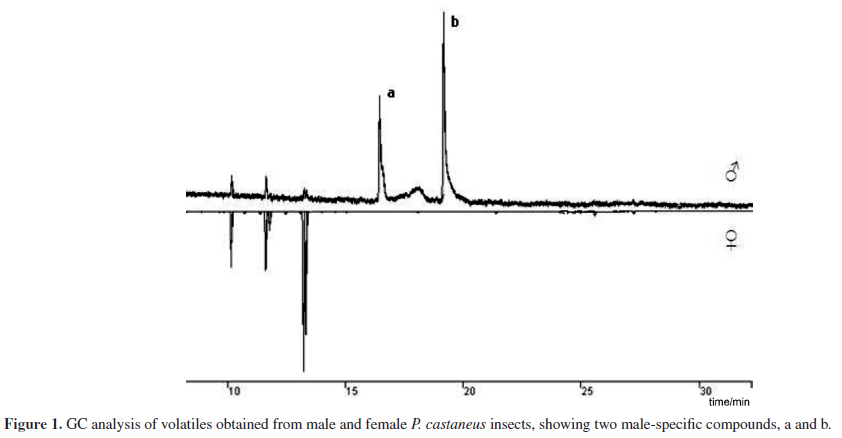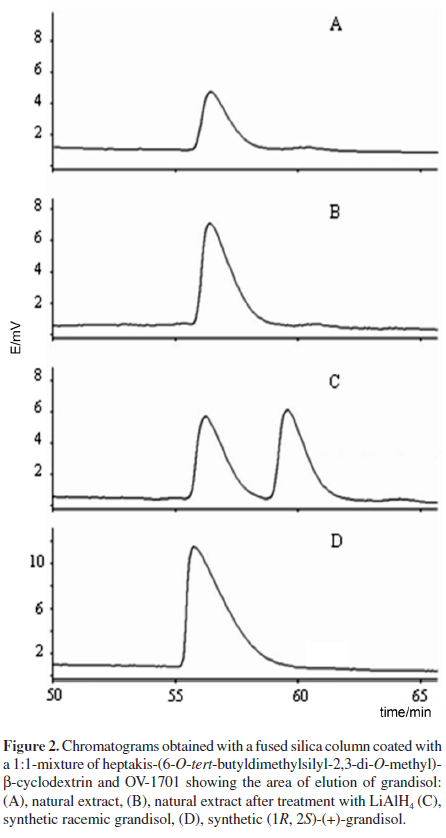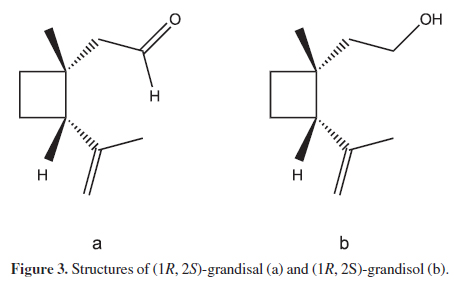The banded pine weevil, Pissodes castaneus (De Geer, 1775) (Coleoptera, Curculionidae) is a forest pest recorded in Brazil since 2001, which is already distributed in the three states of the Southern Region, causing great concern to the forestry sector. Objectives of our study were to isolate, identify, and assess the behavioral activity of male-produced volatiles of P. castaneus. Our results indicate that communication between conspecifics of P. castaneus is mediated by pheromones, as verified by the significant attraction of females to male-produced volatiles. Behavioral tests performed with the insects and the host plant, Pinus taeda, showed that male-produced compounds may act as sex pheromones and that the compounds released by the host plant did not enhance the activity of the male-produced volatiles. The chemical structures of the male specific volatile compounds produced by P. castaneus were determined to be (1R, 2S)-grandisal and (1R, 2S)-grandisol in an enantiomeric excess exceeding 95%.
Pissodes castaneus; Coleoptera; Curculionidae; evidence of sex pheromone; Pinus




